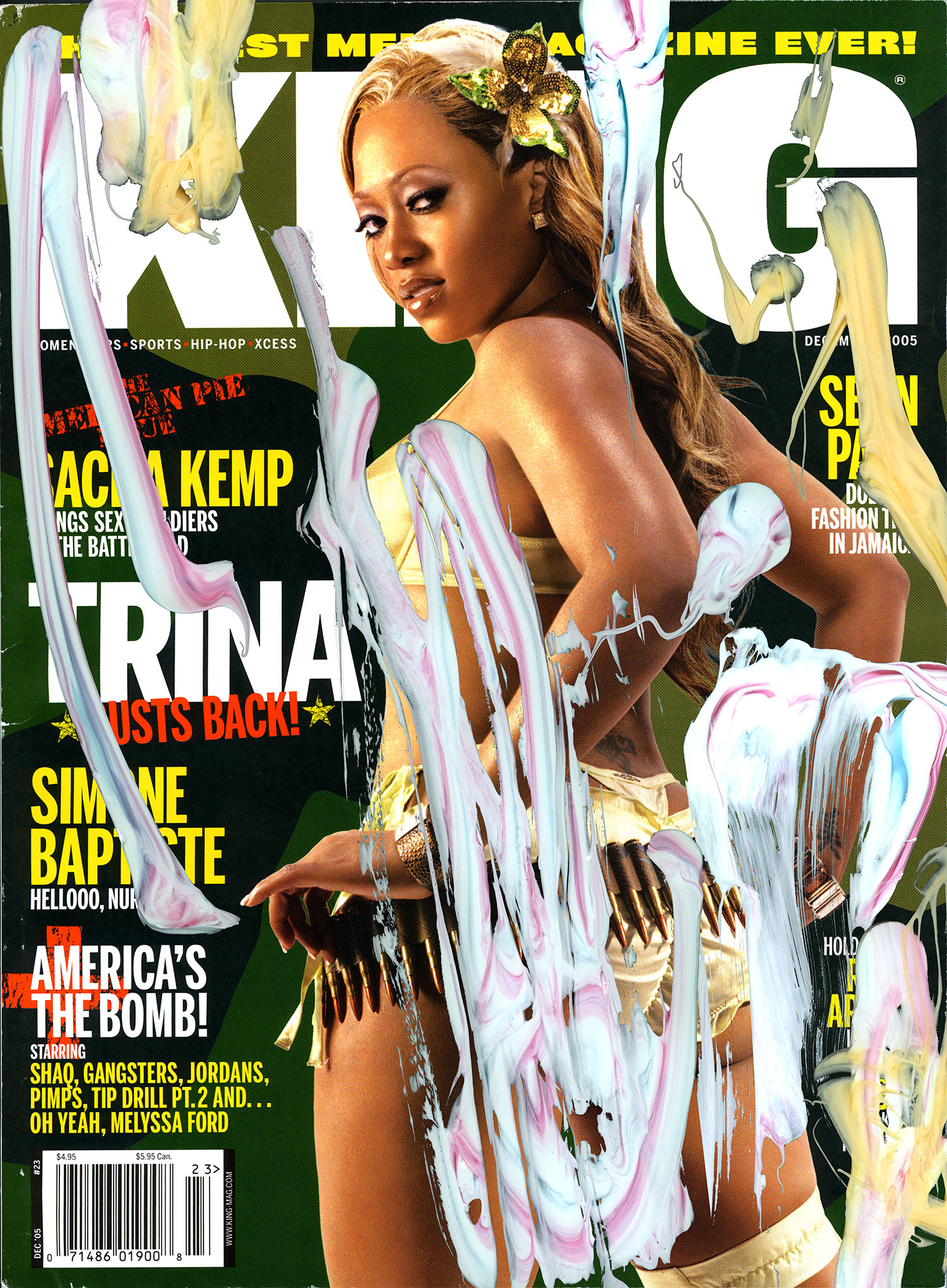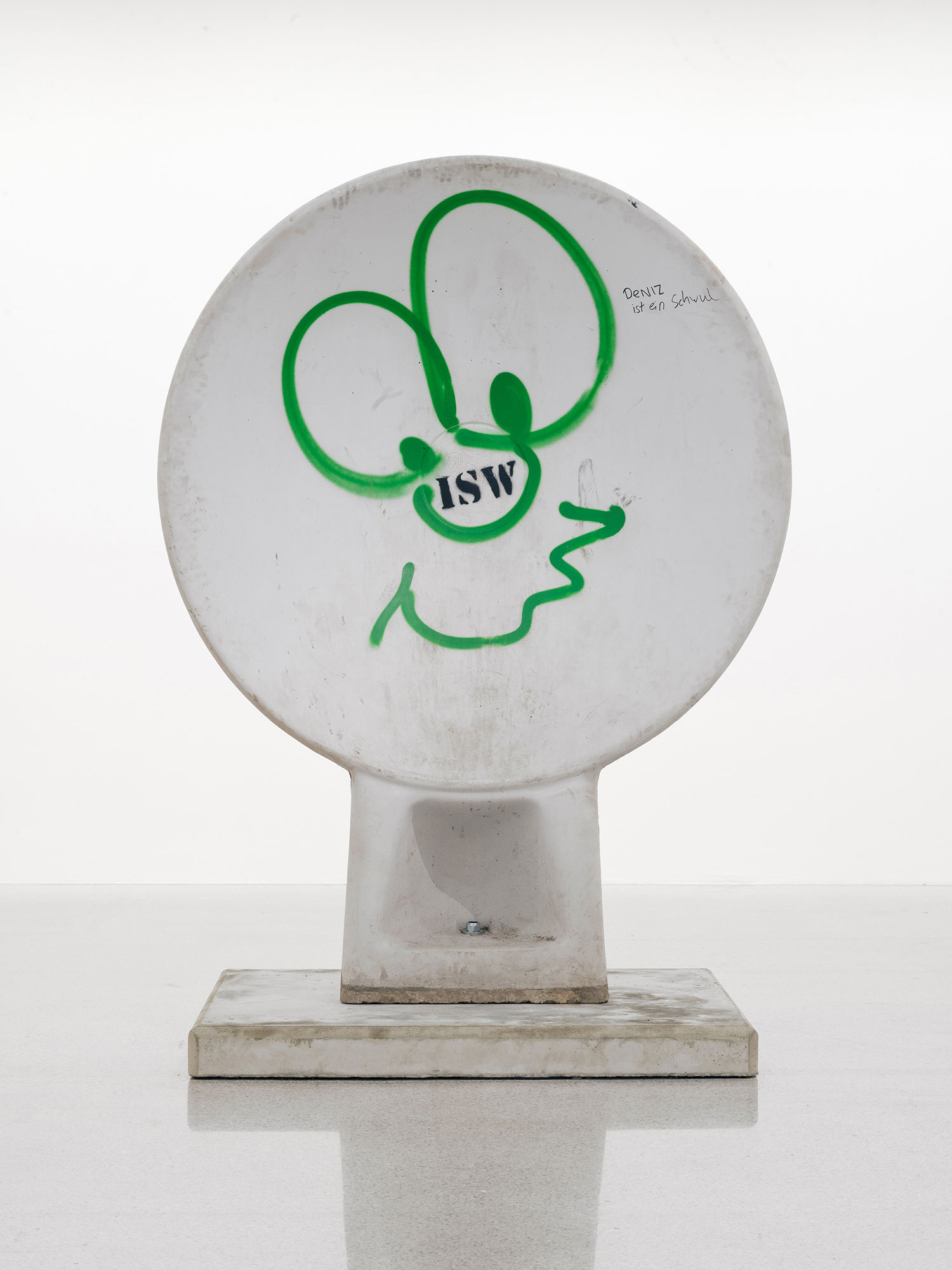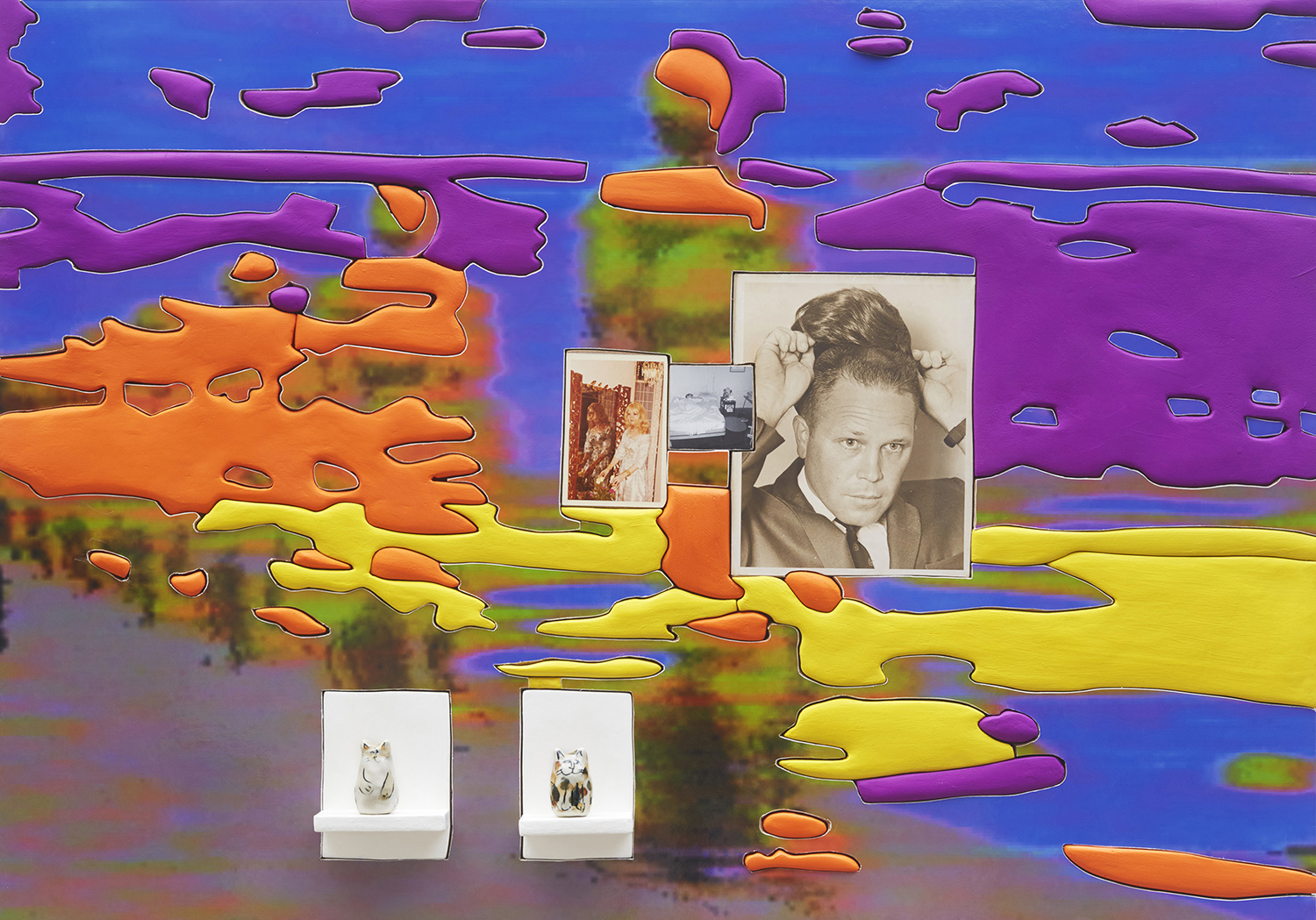Originally published in Flash Art no. 312, January – February 2017.

Standing before the US House of Representatives, Jimmie Durham, head of the International Indian Treaty Council at the United Nations and a leader of the American Indian Movement, deliberated eloheh. The word for land in Tsalagi, the Cherokee language, he explained to his fellow Americans, is the same word for history, culture, and religion. “We cannot separate our place on earth from our lives on the earth nor from our vision and our meaning as a people” [Jimmie Durham, Columbus Day, Albuquerque, NM: West End Press, 1993, p. 70]. The Cherokee nation had occupied present-day Tennessee, Georgia, and Carolina — Echota — for millennia until President Andrew Jackson, or “Sharp Knife” to the Creek nation, emboldened with exceptionalist, romantic notions of Manifest Destiny and an urgency for American swelling, began a remorseless westward exile in the dead of winter in 1838; the Trail of Tears caused nearly a quarter of the Cherokee population to die on the journey. So on June 20, 1978, when Durham testified before Congress, reading his objection to the building of the Tellico Dam on the Little Tennessee River, source of water for the areas of Echota and Tenasi, his address was not over an ambiguous intimidation — it was a familiar historical threat being repeated. “The anthropologists have dug up some bones and some pottery at Echota, and TVA [Tennessee Valley Authority] tells us that we can visit those bones in a museum. But the spirits of our ancestors are not in a museum. They live in the Pine and Hickory and Walnut trees and in those free-running creeks and rivers. I will never live at Echota, any more than a Greek in New Jersey will ever live at the Parthenon, but the hearts of our people say it must be there” [Ibid.].
His political address is part of a lifelong undertaking of dissent — through protest, prose, action and art. In a lateral practice, Durham’s engagement with upholding eloheh is central to understanding the activist, writer, poet and artist’s visual and literary resistance over the past half century. These tensions — and their visual consequences — comprise “At the Center of the World,” a traveling survey of Durham’s work from the 1970s to the present, his first major presentation in America in over two decades, opening at the Hammer Museum in Los Angeles in January 2017.
Durham was born in 1940 in Washington, Arkansas. His family inhabited a Cherokee reservation for over a century, following the Indian Removal Act of 1830 — a barbaric whittling away of ancestral lands occupied by southern Indian tribes, in an ostensible trade for lands west of the Mississippi River. Durham’s engagement in American Indian and civil rights struggles disputes any hesitation that the subjects of his artworks are limited to historical references or exclude contemporary struggles: in the early 1960s, he staged the theater performance My Land with Muhammad Ali and Vivian Ayers-Allen, African American playwright, poet and founder of the Brainerd Institute Project, a restoration of the Brainerd Institute, established in 1866 to educate southern black students.
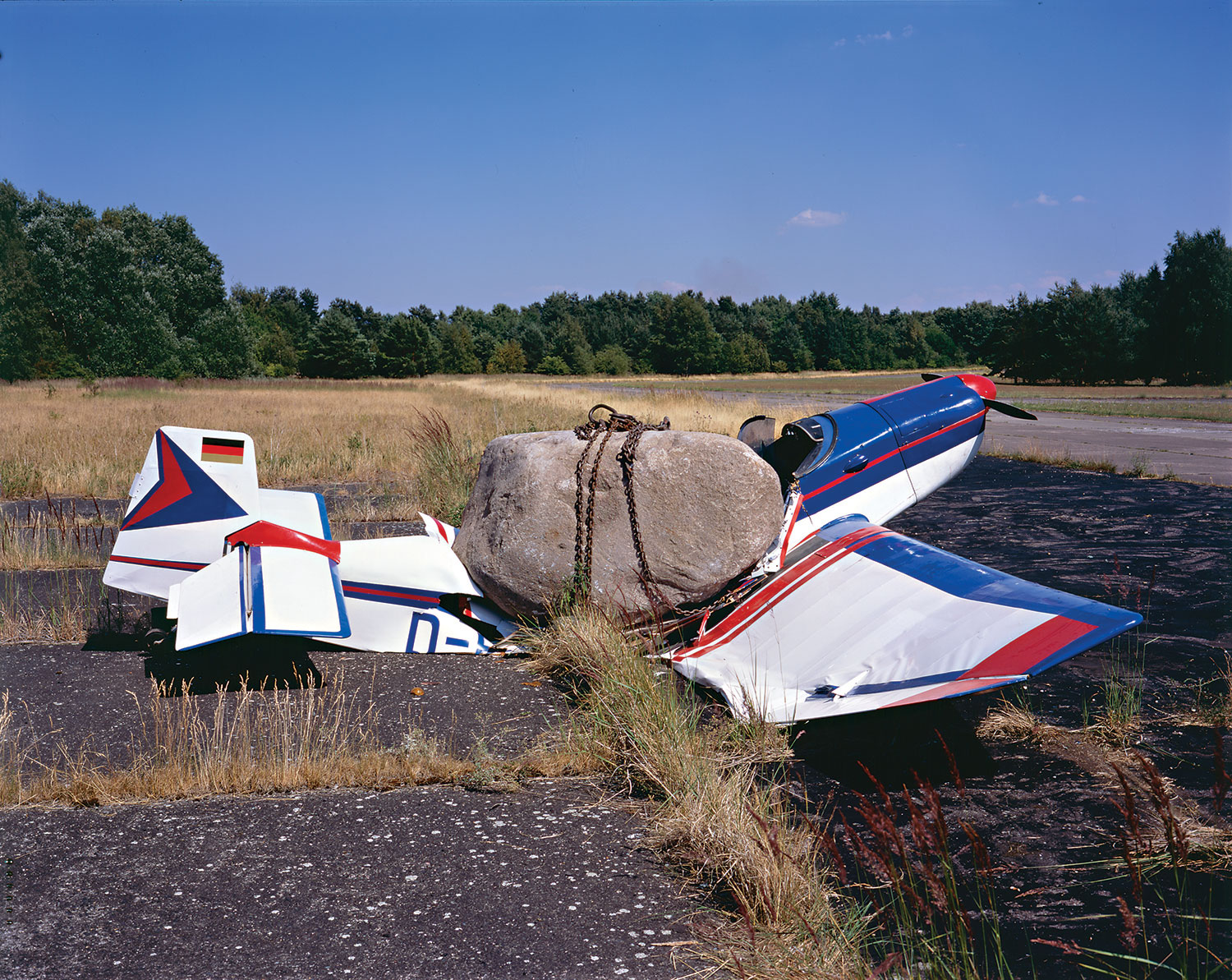
By a tempestuous 1968, Durham was ready to leave the US, moving to Geneva to attend the École des Beaux-Arts in 1969. While developing his early sculptural practice in Switzerland, his commitment to home was only strengthening: in 1973, Lakota Sioux tribe members and American Indian Movement supporters occupied the South Dakota town of Wounded Knee for more than two months, protesting a deeply corrupt tribal president. The location was a tapestry of Sioux history, squarely on the site of the Wounded Knee Massacre of 1890 — a bloody attack on the Lakota camp on Wounded Knee Creek after American soldiers witnessed the Ghost Dance (a slow dance accompanied by a single drumbeat, inviting the buffalo and bison herds hunted to near extinction by settlers and the ghosts of Lakota ancestors back to the land) and took it as prologue to an armed attack upon them. In solidarity with the 1973 seizure, Durham, along with a member of the Mapuche Indian tribe from Chile and a Quechua Indian from Bolivia, formed the International Committee for the Indians of the Americas, or Incomindios. Proximity soon followed his solidarity, and he returned to the US, attending the first International Indian Treaty Conference at Standing Rock, a Lakota and Dakota reservation in North and South Dakota. (This remains a highly charged area, as the construction of the Dakota Access Pipeline, which forcibly violates the ecosystem of this land and the reservation’s main water supply, the Missouri River, and disrupts sacred Sioux sites in order to more efficiently transport crude oil across state lines, is, as of December 2016, very precariously paused.)
Most of the 1980s were spent in the urban wilderness of downtown Manhattan, where Durham was doomed to be not another artist among his but inevitably the other, the Indian artist, so this relocation proved to be just as provisional, and the artist continued on, drifting to Mexico, then re-anchoring in Europe by the mid-1990s to begin creating perhaps his most allegorical works, which fix the retrospective: the series Poles to Mark the Center of the World (1995–ongoing). Europe, or Eurasia, as Durham refers to the continent, holds the first marker to supplant a tree as the only true center of the world — Middelburg, the Netherlands — symbolizing the seven continents as well as referencing Cherokee ideology, with the tribe’s mythology dictating seven directions: up, down, north, south, east, west and inside oneself. The Center of the World at Middelburg (1995), a network of wires running to their outlets through a hollow wooden pole leading to a lonely rotary phone on a footstool, is the first of these anchors in his implacable unmooring. For A Staff to Mark the Center of the World, Gwangju (2004), a trio of wooden branches escalating in height were propped against a wall in tribute to Vietnamese refugees who drowned in the Pacific Ocean on their way to Korea. The artist’s contribution to the biennial was ornamented with hanging key tags, each holding a victim’s name, in a rainbow of cheerful colors, and a handheld mirror trussed upside down to deflect harmful energy and spirits. The tags make visible modern, Western approaches to self-expression and identity — the subjective conclusion that the world is oriented toward oneself, and that we are always at its single center.
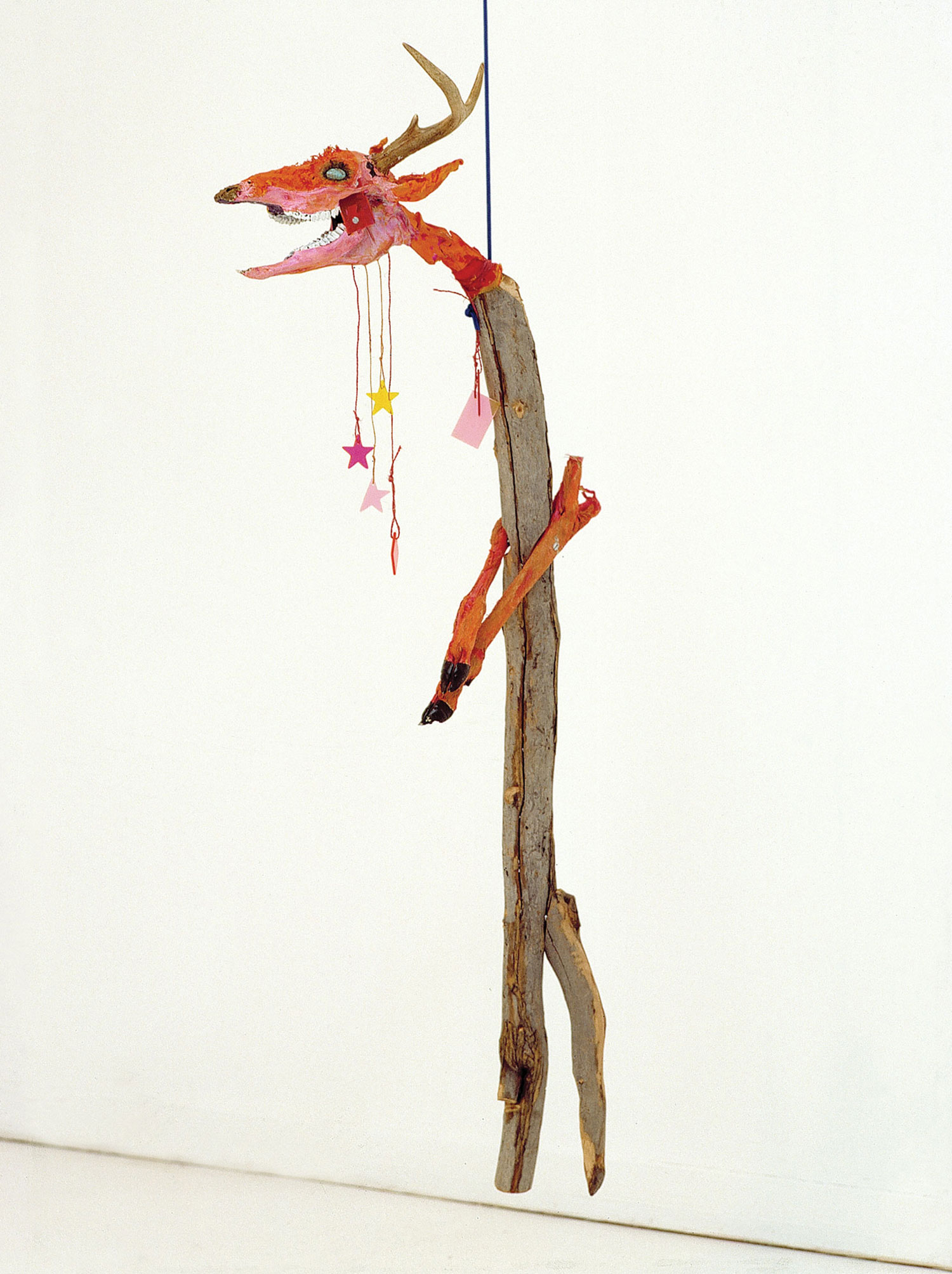
Poles began to form skeletons for figures, disassembled totems whose spirits became ghosts with persistent expressions. In Pocahontas and the Little Carpenter (1988), the couple faces each other expectantly in a tableau deriding the museological display in which Indian art has historically been perceived. Pocahontas, whose visage rests on the regal shoulders and carriage of a dining chair, looks to her partner, whose outstretched arms hold an elongated, decorated rattlesnake in one stick-arm and a photocopy of historical documents dangling from a clipboard in the other. Seducing us using our recognition of familiar elements in their composition, Durham’s skinless bodies instill a certain trusting faith; when the almost-anthropomorphized charm of Untitled (1992) presents to us the artist’s tooth in its single, waxy hand, hiding a giveaway note — “iT’S GOT MR. DURHAM’S TEETH!” — behind its back, one hesitates to doubt its sincerity.
Stone, another frequently used element in Durham’s object montages, is both final and destructive in its mass. He considers rocks as both a dynamic and static material. A hunk of charcoal-hued granite, rendered nearly weightless in Untitled (1972), resembles a minimalist, sophisticated spider carrying itself off on pencil-thin steel legs; rocks crack mirrors (The Flower of the Death of Loneliness, 2000) and dent appliances (Stoning the Refrigerator, 1996); boulders crush cars (Still life with Spirit and Xitle, 2007) and airplanes (Encore tranquillité, 2008); and rocks are also displayed for their own merit (Red Granite and Grey Cristalina Granite, 1971).
His assemblages takes on many lives and densities, both organic and inanimate: bones in works such as Tlunh datsi (1984), Red Turtle (1991), Manhattan Festival of the Dead (1982) and A Dead Deer (1986) call upon their former inhabitants. His poem “Tarascan Guitars” describes in detail his process of creating Armadillo (1976), a sculpture that uses a found skull to reinterpret a folk-art tradition: “I painted the armadillo’s skull bright turquoise and orange, / Blue and red, black, green, like tiles and Aztec flowers. / Where his old eyes had been, I put an agate / and a seashell; / For seeing in all directions.” [Ibid., p. 48] Extensive writings have aligned both sides of his practice, leading to intimacies between rune and gesture. Art, he has intimated, is distinct from language, and that is precisely its value.
The artist’s portraits and self-portraits, a carrying over of the European tradition into his own practice, take the shapes and likenesses of many, but it is his version from 1987 that delivers the most literal variation: the life-sized cutout levitates away from its wall mount, its dermis delivers the self-critiques and –truths that his voice cannot: “Hello! I’m Jimmie Durham. I want to explain a few Basic Things About Myself. In 1986 I was 46 years old. As an artist I am confused about many things, but basically my health is good and I am willing and able to do a wide variety of Jobs. I am Actively seeking Employment.” His heart is literally cut open for us to stare at its wooden machinations, while his turquoise eye peers straight ahead. His “Caliban” works create a persona from the context of Shakespeare’s The Tempest (Caliban is a near anagram of cannibal) — a wild man tamed once he masters his colonizer’s language. In this character, Durham is free to embody himself as well as a metaphorical, marginalized representative. Caliban’s Mask (1992) is an emotive face of black mud hardened around two mismatched glass eyes and a button nose. His formation is documented in the Caliban Codex, an open diary and sketchbook consisting of a series of captioned drawings and letters to his tutor, Mr. Prospero.
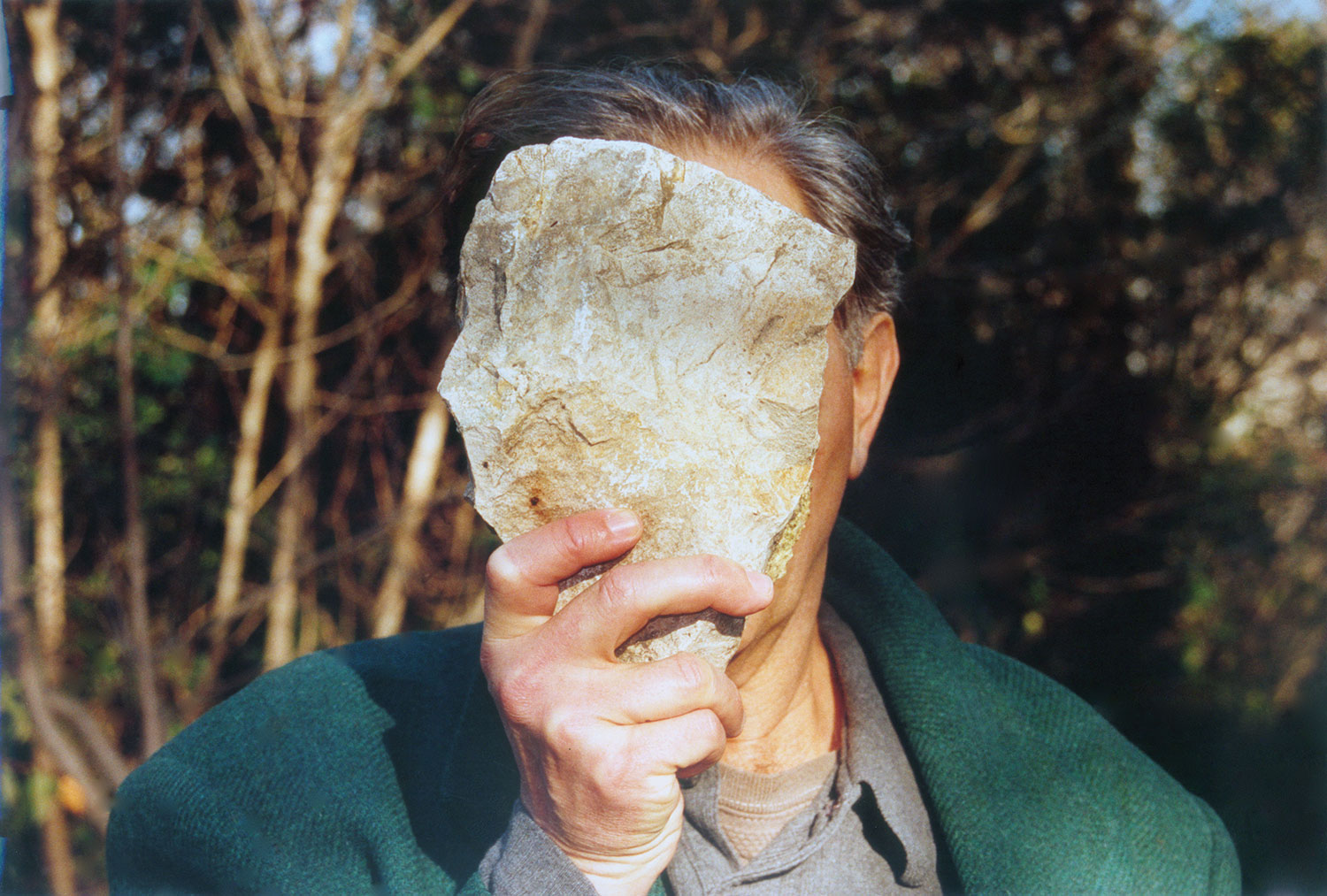
Looking outward, the commanding Malinche (1988–92) is a stylized full-body portrait of the traitorous Nahua mistress to sixteenth-century Spanish explorer Hernán Cortés. Enabler of his conquest of her land and people, she asks for our sympathy — her rape is the rape of Indian lands. She wears a delicate gold bra, pointing to her lover’s bloodthirsty pursuit of the lusted-after metal. Approach in Love and Fear, his 1992 installation for Documenta IX, incorporates the sculpture Jesus (Es geht um die Wurst), a scaled-down figure dressed in manure, blood, and mud, displaying a crimson erection and metal eye. He shows us a photograph of a mummified dog; nearby, Treff is a trio of cumbersome wooden saw horses in formation, connected by a heavily wrapped metal spine held in red leather. The structure, together with a perpendicular branch made up in cerulean, supports a thin, fragile rod bearing a sign with the work’s title. Approach in Love and Fear holds the divisions between painting, drawing and sculpture in uneasy balance.
So many works organized into a population together are a sentimental — and martial — force. Durham has been a defender of other artists through his role in the Foundation of the Community of Artists and as editor of the newspaper Art and Artists, and by curating the work of other artists. He has brought together marginalized populations, both at home, wherever home may be, and abroad — other Native American tribes, Puerto Ricans, Chicanos and African Americans struggling in America’s electoral system — into one coalition, the People’s Alliance. The artist invokes his Cherokee ancestors, both mythical and embodied, in ways that keep historical lineages alive and germane.
The work of Sequoyah, a Cherokee credited with creating a written guide to his tribe’s language in the early nineteenth century, inadvertently led to the 1828 publishing of Tsa la gi Tsu lehisanunhi, or Cherokee Phoenix, a bilingual Cherokee/English newspaper — a chronicling of the tribe within the political system of the United States and an autobiography of Cherokee folklore. As in “Tarascan Guitars,” Durham has already found his armadillo skull: “And like Sequoia who was lost in Mexico / I write to remember” [Ibid.].

